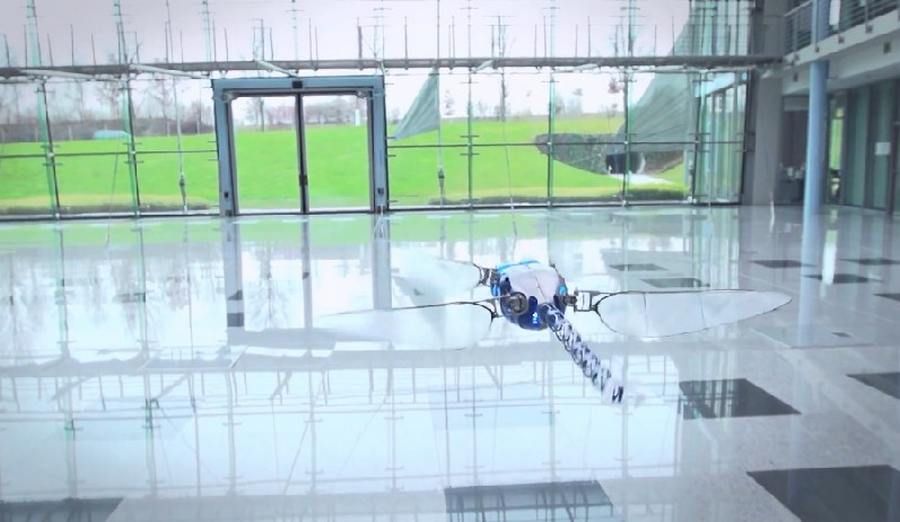The flight of the dragonfly is unique in the animal kingdom. It’s complex four-wing mechanics give it significant advantages over traditional two-wing flyers. By moving two sets of wings independently of each other, the dragonfly is able to enjoy much more maneuverability and speed control. It’s no wonder so many robotics designers have tried to replicate this design in their flying robots.
Unfortunately, the flight mechanics of the dragonfly are decidedly difficult to replicate. Although many have tried to perfect their design, few have managed to create anything more than a clumsy rendition. However, Festo, a German based automation company, claims to have “technically mastered” the flight mechanics of the dragonfly with their new robotic insect called the BionicOpter. From what can be seen in the BionicOpter demonstration video, they may be right.
Measuring 24.8 inches from wing to wing and 17.3 inches from head to tail, the BionicOpter is significantly larger than an actual dragonfly. Though quite large, the robotic insect only weighs 6 ounces due to the lightweight materials that it’s made out of. Its light weight and unique design give it a large amount of maneuverability and allow it to fly in any direction.
Several adjustments need to be made mid-flight for the robot to stay in the air. Tiny changes in inertia or angle need to be accounted for and the internal mechanisms must be adjusted accordingly for the dragonfly to remain flying. Fortunately, the complexities of the flight are all handled by the BionicOpter’s incredible pair of electronics and software that calculates and processes all the needed adjustments. All the user needs to do is steer the dragonfly with a simple remote control or even a smartphone.
While flying a robotic dragonfly around your house is sure to be a blast, many have speculated that the design will soon see use outside of the home. The versatility and maneuverability of the design would make it incredibly useful for certain government agencies. In the future, we may very well see robotic dragonflies being used to defuse a bomb from a distance, secretly gathering intelligence, or even exploring the surface of Mars.


